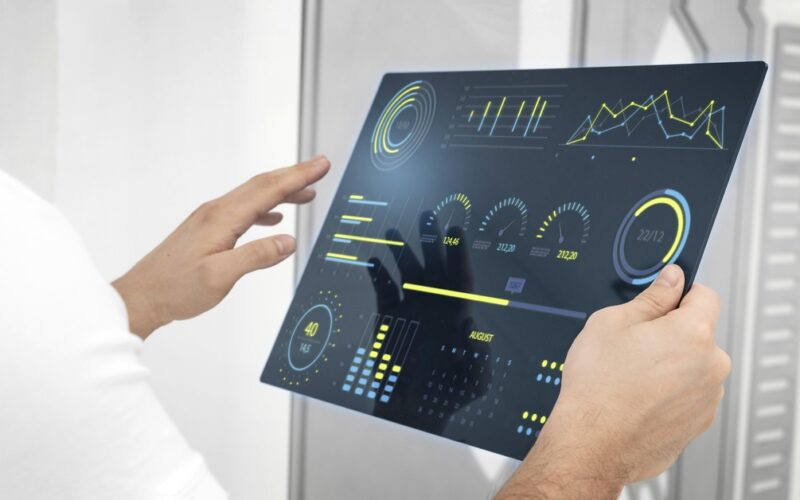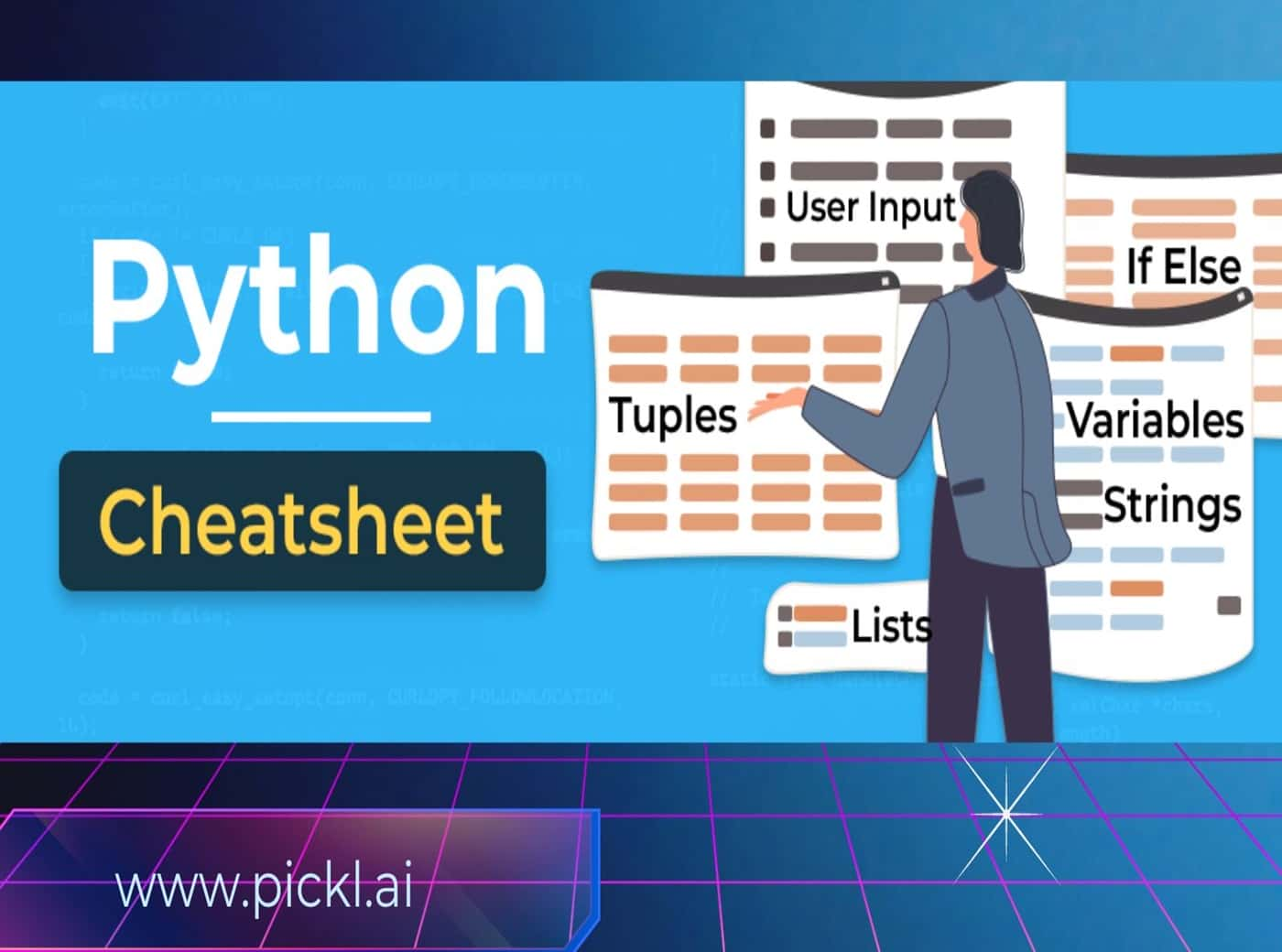Summary: Data visualisation transforms raw data into transparent, visual formats, aiding trend analysis and decision-making. A data visualisation course tailored for beginners and experienced professionals will help you discover essential techniques and enhance your skills.
Introduction
Data visualisation is a crucial skill in Data Science, offering insights through visual representations like charts and graphs. This blog will explore the importance of data visualisation in Data Science and guide you through the data visualisation process in seven key steps.
Whether you’re looking for a data visualisation course for beginners or seeking to refine your skills as an experienced professional, you’ll find valuable techniques and tools here. We’ll also highlight how data visualisation online training courses can boost your proficiency and enhance your ability to convey complex data effectively.
Explore essential data visualisation techniques in Data Science to elevate your data presentation skills.
Understanding Data Visualisation
Data visualisation is the presenting of information and statistics using visual tools that include charts, graphs, and maps. Its goal is for creating patterns in data, trends, and anomalies comprehensible to both data professionals and people without technical knowledge.
It aids in well-informed choices and transforms raw data into useful information by adding colour and meaning to data. A national healthcare agency, for example, may utilise visualisations of information to highlight COVID-19 hotspots or vaccination rates throughout various geographical areas.
If you’re an aspiring Data Science professional, Data Visualisation will be part of your job role in presenting the insights in a visually understandable format. However, if you’re a beginner to the field, you need to undertake Data Visualisation course for beginner.
It will help you learn from the fundamentals of visualistaion and then move forward with advanced level concepts.
Importance of Data Visualisation in Data Science
Data Visualisation plays an essential role in Data Science, significantly impacting various aspects of Data Analysis and interpretation. By visually representing data, it allows Data Scientists to gain insights, communicate findings, and make informed decisions. Here’s an in-depth look at why Data Visualisation is so crucial in Data Science:
Enhancing Data Understanding and Exploration
Data Visualisation is pivotal in gaining a comprehensive understanding of complex datasets. Raw data alone can be overwhelming and difficult to interpret. By creating visual representations, such as charts, graphs, and plots, Data Scientists can uncover patterns, trends, and relationships that may be hidden in the raw data.
Visualisations simplify the exploration process, allowing for quick identification of key insights and leading to more informed decision-making and hypothesis formulation.
Effective Communication and Storytelling
Communicating data findings to both technical and non-technical audiences becomes much more effective through Data Visualisation. Complex data can be difficult to grasp without visual aids. Visualisations break down intricate information into easily understandable formats, enabling Data Scientists to present their findings in a clear and engaging manner.
This storytelling approach enhances the impact of Data Analysis, making it easier for stakeholders to comprehend and act upon the information.
Identifying Patterns and Detecting Anomalies
One of the primary benefits of Data Visualisation is its ability to reveal patterns and detect anomalies. Visual tools, such as scatter plots, histograms, and heatmaps, help Data Scientists spot trends, clusters, and outliers that might be missed in raw data.
This capability is crucial for identifying anomalies, assessing data quality, and refining data cleaning processes. Effective pattern recognition and anomaly detection contribute to more accurate and reliable analyses.
Extracting Insights and Supporting Decision-Making
Data Visualisation empowers Data Scientists to extract meaningful insights and draw actionable conclusions from data. Interactive visualisations allow users to explore data from various angles, drill down into specific details, and perform on-the-fly analyses.
This interactivity supports decision-making by providing stakeholders with the tools needed to explore data and make informed choices based on visual evidence.
Facilitating Feature Selection and Model Evaluation
In predictive modeling, Data Visualisation aids in selecting relevant features and evaluating model performance. By visualising correlations, distributions, and feature importance, Data Scientists can determine which variables are most informative for their models. Additionally, visual tools help in comparing different algorithms and interpreting model predictions, leading to more effective and accurate modeling efforts.
Simplifying Complex Concepts
Data Visualisation is instrumental in explaining complex concepts and analytical methods. Visual aids can illustrate data transformations, statistical techniques, and machine learning algorithms in a way that is intuitive and accessible. This simplification promotes transparency, enhances collaboration, and improves understanding among stakeholders, facilitating better communication of analytical processes and results.
Enhancing Presentations and Reports
The effectiveness of presentations and reports is greatly enhanced by incorporating Data Visualisation. Visual elements make reports and presentations more engaging, informative, and easier to digest.
By summarising findings through visual means, Data Scientists can support their arguments, highlight key messages, and provide evidence-based insights. This approach helps the audience to quickly grasp and retain important information.
Encouraging User Engagement and Interactivity
Interactive visualisations foster user engagement and deeper analysis. Allowing users to interact with visual representations encourages them to explore data, test hypotheses, and discover new insights. This interactive approach not only enhances the user experience but also promotes a more collaborative and thorough analysis process.
Read Blog: Data Visualisation: Advanced Techniques for Insightful Analytics.
Data Visualisation Techniques in Data Science
Data visualisation is essential in Data Science, providing various methods to present and interpret complex information. Effective visualisation techniques help translate raw data into clear, understandable formats, making it easier to analyse and draw insights.
Here are some commonly used data visualisation techniques:
- Tables: Tables organise data into rows and columns, presenting information in a structured format. Tools like Excel or Google Sheets allow users to create tables easily, offering a concise and organised way to display data for quick reference.
- Charts and Graphs: Charts and graphs represent data along x and y axes, utilising different visual elements such as bars, lines, or points. These graphical representations make it easier to identify trends, patterns, and comparisons in the data.
- Infographics: Infographics combine visual elements with text to convey data in an engaging and aesthetically pleasing manner. By incorporating images, icons, and graphical representations, infographics make complex information more accessible and memorable.
Each of these techniques serves a unique purpose, enhancing data interpretation and communication in Data Science.
How to do Data Visualisation in 7 steps?
Data visualisation is a powerful tool that transforms raw data into intuitive, interactive visual formats. To ensure your visualisations are impactful and clear, follow these seven essential steps.
Each step is designed to guide you through the process, from defining your goals to presenting your final product. Let’s explore how to create compelling and effective visual representations of your data.
Step 1: Define the Purpose and Audience
Before diving into data visualisation, it’s important to define the purpose of your visualisation and understand your target audience. Ask yourself what you want to achieve with your visualisation.
Are you trying to showcase trends, compare data, explore relationships, or tell a compelling story? Identifying the purpose will guide your choices throughout the visualisation process. Additionally, consider the background and familiarity of your audience with the subject matter to ensure the visualisation is accessible and meaningful to them.
Step 2: Identify the Relevant Data
To create an effective data visualisation, you need to identify the relevant dataset(s) that contain the information you want to visualise. Ensure the data is clean, organised, and relevant to your objective.
Perform any necessary data cleaning, preprocessing, or aggregation to ensure the data is in a suitable format for visualisation. This step is crucial as the quality and integrity of your data will directly impact the accuracy and credibility of your visualisation.
Step 3: Choose the Right Visualisation Technique
Once you have your dataset, it’s time to select the most appropriate visualisation technique to represent your data effectively. The choice of visualisation depends on several factors, including the type of data you have (categorical, numerical, time series), the relationships you want to display (comparisons, distributions, correlations), and the story you want to convey.
Some common visualisation types include bar charts, line graphs, scatter plots, histograms, heatmaps, and maps. Research different visualisation techniques and consider their strengths and limitations in relation to your data and objective.
Step 4: Design the Visualisation
Designing the visual elements of your visualisation is crucial to ensure clarity and visual appeal. Consider the following design aspects:
- Colors: Choose an appropriate color palette that suits the data and the purpose of your visualisation. Use colors strategically to highlight key elements or patterns, but avoid overwhelming or misleading the audience.
- Fonts and Labels: Select legible fonts for your titles, axis labels, and data labels. Ensure that the labels are clear, concise, and properly positioned for easy understanding.
- Layout and Composition: Arrange the visual elements in a logical and intuitive manner. Use proper spacing, alignment, and visual hierarchy to guide the viewer’s attention and make the visualisation easy to navigate.
- Annotations and Context: Add annotations, captions, or explanatory text to provide additional context and guide the interpretation of the visualisation. This can include explanations of data sources, definitions of terms, or notes on significant observations.
- Accessibility: Consider accessibility factors, such as providing alternative text for images, ensuring color contrast for readability, and accommodating different screen sises or devices.
Step 5: Create the Visualisation
Once you have planned the design, it’s time to create the visualisation. Depending on your proficiency and preference, you can use various tools and technologies to bring your visualisation to life. Common options include programming libraries like Matplotlib, Seaborn, Plotly, or ggplot in languages such as Python or R.
Additionally, there are user-friendly tools like Tableau, Power BI, or Google Data Studio that offer drag-and-drop interfaces for creating visualisations without extensive coding. Choose the tool that aligns with your skills and provides the necessary flexibility and functionality for your visualisation.
Step 6: Enhance with Interactivity (Optional)
Consider adding interactivity to your visualisation to enhance user engagement and exploration. Interactive elements allow users to interact with the visualisation, change parameters, filter data, or view additional details. This can be accomplished using libraries like Plotly, D3.js.
Step 7: Present and Communicate
Share your visualisation with the intended audience. Consider the best medium for presenting your visualisation, such as reports, dashboards, or interactive tools. Clearly communicate the insights and message behind the visualisation, ensuring it is accessible and easily understood.
Further Explore: Data Visualisations in Python and R: Python V/S R.
Frequently Asked Questions
What is the importance of data visualisation in Data Science?
Data visualisation is vital in Data Science because it transforms complex datasets into visual formats that reveal patterns, trends, and anomalies. This clarity supports better decision-making and communication, allowing both technical and non-technical audiences to effectively understand and act upon data insights.
How can a data visualisation course for beginners help?
A data visualisation course for beginners provides essential skills for creating impactful visualisations. It covers foundational concepts such as chart types, data interpretation, and visualisation tools, helping novices learn how to present data clearly and effectively. This foundational knowledge is crucial for advanced Data Analysis and presentation.
What are some common data visualisation techniques in Data Science?
Common data visualisation techniques include bar charts for comparisons, line graphs for trends, scatter plots for relationships, and heatmaps for data density. Each method serves a specific purpose, helping Data Scientists identify patterns, trends, and anomalies and effectively communicate data insights to various audiences.
Conclusion
In conclusion, the Data Visualisation is an important component of Data Science that is useful for communicating data. The use of Data Visualisation tools and techniques will help you in creating compelling visualisation. Effectively, it can help in highlighting and communicating the data trends and patterns to others.
You can become proficient in Data Visualisation by undertaking Data Visualisation Online Training Courses. Pickl.AI offers myriad of Data Science courses which can help you develop your skills and knowledge in the field.






